Monday, June 30, 2008
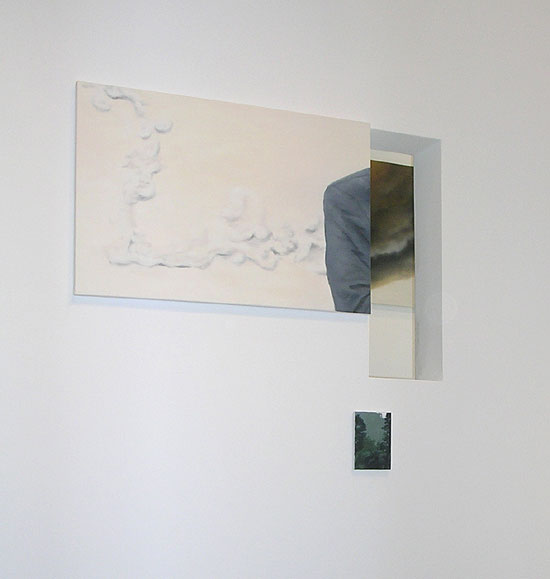
photo: Jean Pike, onsite view Site Santa Fe Biennial 2008
New Architecture at the Site Santa Fe Biennial
Lucky No. 7
Site Santa Fe’s generic warehouse space was transformed for its 7th Biennial into a rich spatial experience by architects Todd Williams and Billie Tsien and unveiled during weekend opening events June 20-22. The architecture that was inserted into the space was an armature for movement and viewing and provides the thread that holds together a show of site-specific work by 25 artists from 16 countries.
Todd Williams and Billie Tsien, who had used ideas about “spatial curiosity” and “approaching” to generate a previous project with curator Lance Fung for the Snow Show in Torino, developed peripatetic ways of moving through the Site exhibition space that offer elevation changes (ramps, steps, balconies and raised walkways) and the possibility to perceive space, art and people from multiple angles, heights and perspectives. Spaces for moving become event spaces: locations for stopping, gathering, looking, listening, sitting, talking, art-making and other random actions.
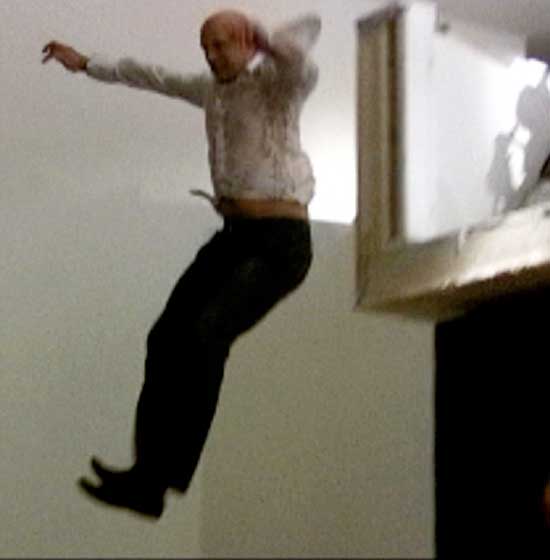
photo: Megan Fisher McHugh, courtesy of santafelucky7.com
The exhibition space is largely defined by the presence of the surfaces upon which and within which one moves. Vertical walls, where they exist, are sometimes punctured, sometimes partial, allowing for moments of spatial transparency, parallax and specific perspective views. Because of the complex ways of moving and looking at the art one starts to perceive an overlap, an overlapping of spaces, of art, of one artist’s work upon another and of one location upon another, of digital onto analog and vice versa.
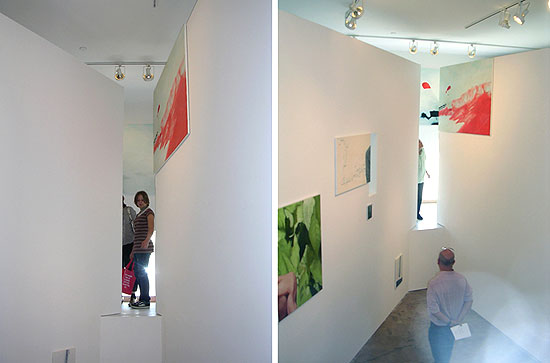
photo: Jean Pike, onsite view Site Santa Fe Biennial 2008
The idea of spatial overlap and extension mixes with the content and concepts of the art: paintings of internet images made in Korea and paintings of internet images made in Santa Fe (artist Soun Myung Hong), Mnemonic connections between disparate locations such as that which exist between Studio Azzurro’s interactive video projection, Fourth Ladder, and actual ramps with actual people climbing on them within the exhibition space, work like an alternating montage between digital and analog.
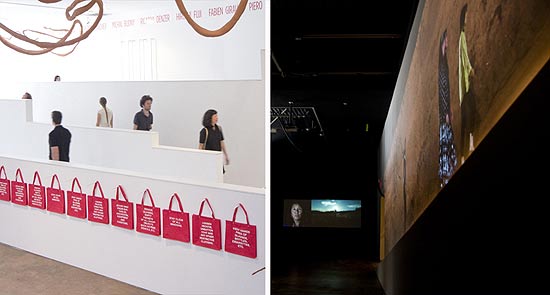
photos: BayAreaEventPhotography.com
Abduction, a work by Fabian Giraud and Raphaël Siboni also references alternate locations. Their piece, taken from a Santa Fe gallery, was transformed, installed at Site, and is intended to be relocated back to its original gallery after the Biennial closes, having been transformed yet again. Even the materials used for the architectural construction of the exhibition will be dismantled and reused elsewhere at the end of the show. Be it literal or conceptual, the offsite projects are now also overlapped onto the site, and a sort of simultanaeity begins to occur. Work created elsewhere and the sensibilities of artists from elsewhere, an interest in recyclable art-making materials and a spatial experience that, through movement and view, emphasizes montage, are all brought to bear on the site and reverberate back outward beyond its confines.
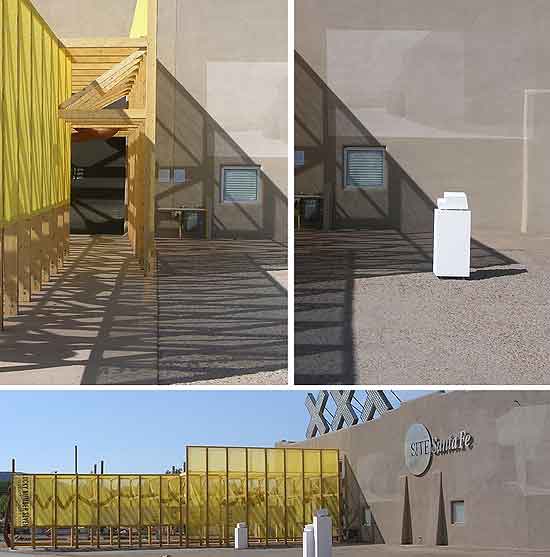
photo: Jean Pike, onsite view Site Santa Fe Biennial 2008
At the front, the new transparent entrance structure, built with manufactured materials, is a contemporary version of the traditional New Mexican ramada, a trellis-like structure made from wood branches that provides ventilation and shade in the harsh summer months. It’s moving shadows mix with the simulated and static (painted) projection images of Michal Budny and Zbigniew Rogalski’s Slideshow and vibrate with the complexity of here and now and then and somewhere else all at the same time. With the addition of the piece by Rose B. Simpson, Eliza Naranjo Morse and Nora Naranjo Morse snaking through, it makes a great introduction to the show, revealing all the passion and energy of the artists’, architects’ and curators’ work.
Can we, as Christine Boyer asks in reference to postmodern cities, “find the unity of community in this fragmented experience?” At Site we see our stories overlapping into new and exciting configurations that offer the promise of an even greater community, no matter how complex.
Lance M. Fung (fungcollaboratives.org) is the 2008 curator of Site Santa Fe Biennial titled "Lucky Number 7." There are currently 25 artists from 16 countries participating including: Martí Anson, Fabio Cirifino, Paolo Rosa, Stefano Roveda, Leonardo Sangiorgi, Erick Beltrán, Luchezar Boyadjiev, Michal Budny, Ricarda Denzer, Hiroshi Fuji, Fabien Giraud, Piero Golia, Soun Myung Hong, Scott Lyall, Nick Mangan, Eliza Naranjo-Morse, Nora Naranjo-Morse, Ahmet Ögüt, Mandla Reuter, Nadine Robinson Born in 1968 in London, Zbigniew Rogalski, Wael Shawky, Raphaël Siboni, Rose B. Simpson and Shi Qing Born with a curatorial team including: Ferran Barenblit, Iara Boubnova, Gregory Burke, Colin Chinnery, Alexie Glass, Lukasz Gorczyca and Michal Kaczynski, Laura Steward Heon, Barbara Holub, Vasif Kortun, Chus Martinez, Martina Mazzotta, Tsukasa Mori and Yuu Takehisa, Joseph Sanchez, Patrizia Sandretto, Guillermo Santamarina, Hyunjin Shin, Alessandro Vincentelli, Marc-Olivier Wahler, William Wells, William Wells,
SITE Santa Fe was launched in 1995 to organize the only international biennial of contemporary art in the U.S. Conceived to bring the global contemporary art dialogue to the art-rich Southwest, and as a major event on par with such renowned exhibitions as the Whitney Biennial and the Venice Biennale, it has become an integral event for contemporary art aficionados, attracting tens of thousands of visitors from around the world. To date, SITE Santa Fe has successfully held six biennials, each of which has drawn worldwide attention and brought important contemporary art from all over the world to Santa Fe. Past biennial curators have either arrived as or have subsequently become superstars in the world of contemporary art. Following their SITE Santa Fe Biennial guest curatorships, Francesco Bonami (1997), Rosa Martínez (1999) and Robert Storr (2004) were chosen to organize the Venice Biennales in 2003, 2005 and 2007, respectively. Dave Hickey received the coveted MacArthur “Genius Award” after curating SITE’s Biennial in 2001. In 2006, Klaus Ottmann, a New York-based independent curator organized SITE Santa Fe’s Sixth International Biennial, Still Points of the Turning World that ran from July 9, 2006 to January 7, 2007.
Past artists have included: Marina Abramovic, Chema Alvargonzález, Francis Alÿs, Robert Ashley, Rebecca Belmore, Barbara Bloom, Imre Bukta, Carlos Capelán, Thomas Joshua Cooper, Braco Dimitrijevic, Felix Gonzáles-Torres, Ann Hamilton, Gary Hill, Jenny Holzer, Rebecca Horn, Anish Kapoor, Catherine Lord, Chie Matsui, Jakob Battner, Gerald McMaster, Bruce Nauman, Marta María Pérez Bravo, Alison Rossiter, Meridel Rubenstein, Andres Serrano, Lorna Simpson, Valeska Soares, Pierrick Sorin, Trinh T. Minh-ha, Tseng Kwong Chi, Millie Wilson, Massimo Bartolini, Vanessa Beecroft, Maurizio Cattelan, Olafur Eliasson, Giuseppe Gabellone, Kevin Hanley, Noritoshi Hirakawa, Gary Hume, Lukás Jasansky & Martin Polák, KCHO, William Kentridge, Suchan Kinoshita, Udomsak Krisanamis, Sharon Lockhart, Esko Männikkö, Tracey Moffatt, Chris Moore, Elizabeth Peyton, Huang Yong Ping, Tobias Rehberger, Miguel Rio Branco, Rudolf Stingel, SubREAL, Sam Taylor-Wood, Pascale Marthine Tayou, Jaan Toomik, Eulalia Valldosera, Helena Almeida, Ghada Amer, Janine Antoni, Monica Bonvicini, Louise Bourgeois, Tania Bruguera, Cai Guo-Qiang, Lygia Clark, Diller + Scofidio, Dr. Galentin Gatev, Greenpeace, Yolanda Gutiérrez, Mona Hatoum, Carl Michael von Hausswolff, Carsten Höller, Simone Aaberg Kærn, Zwelethu Mthethwa, Nikos Navridis, Shirin Neshat, Rivane Neuenschwander, Gabriel Orozco, Pipilotti Rist, Francisco Ruiz de Infante, Bülent Sangar, Arsen Savadov & Georgy Senchenko, Charlene Teters, Sergio Vega, Miwa Yanagi, Kenneth Anger, Jo Baer, Jeff Burton, James Lee Byars, Pia Fries, Gajin Fujita, Graft Design, Frederick Hammersley, Marine Hugonnier, Jim Isermann, Ellsworth Kelly, Josiah McElheny, Darryl Montana, Sarah Morris, Takashi Murakami, Nic Nicosia, Kermit Oliver, Jorge Pardo, Ken Price, Stephen Prina, Bridget Riley, Ed Ruscha, Alexis Smith, Rafael Soto, Jennifer Steinkamp and Jimmy Johnson, Jessica Stockholder, Jane and Louise Wilson, Ricci Albenda, Louise Bourgeois, Charles Burns, Francesco Clemente, Bruce Conner, R. Crumb, John Currin, Carroll Dunham, James Esber, Inka Essenhigh, Tom Friedman, Ellen Gallagher, Robert Gober, Douglas Gordon, Mark Greenwold, Lyle Ashton Harris, Jörg Immendorff, Jasper Johns, Kim Jones, Mike Kelley, Maria Lassnig, Sherrie Levine, Christian Marclay, Paul McCarthy, Jennifer and Kevin McCoy, Elizabeth Murray, Bruce Nauman, Hermann Nitsch, Jim Nutt, Tony Oursler, Gary Panter, Lamar Peterson, Raymond Pettibon, Lari Pittman, Sigmar Polke, Neo Rauch, Alexander Ross, Susan Rothenberg, Peter Saul, Jenny Saville, Thomas Schütte, Jim Shaw, Cindy Sherman, Laurie Simmons, Fred Tomaselli, Adriana Varejão, Davor Vrankic, Kara Walker, Jeff Wall, John Waters, John Wesley, Franz West, Lisa Yuskavage, Miroslaw Balka, Jennifer Bartlett, Patty Chang, Stephen Dean, Peter Doig, Robert Grosvenor, Cristina Iglesias, Wolfgang Laib, Jonathan Meese, Wangechi Mutu, Carsten Nicolai, Catherine Opie, Thorns Ltd.
Friday, June 20, 2008
Nashawannuck Gallery Easthampton Massachusetts Meets
Harvard University's Peabody Museum of Archaeology & Ethnology
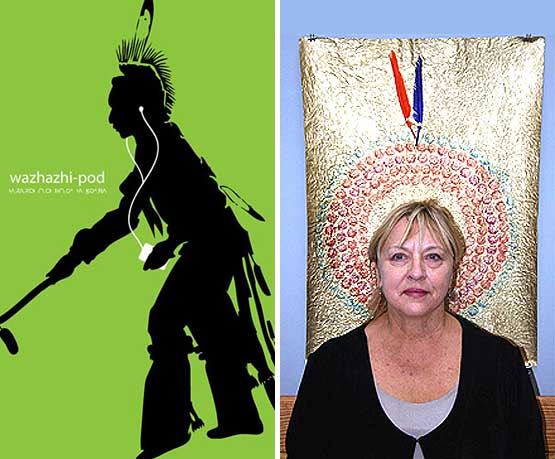
Peabody Museum of Archaeology & Ethnology, Harvard University
right: Dan Loudfoot, Everyone Wants To Be An Indian,
Nashawannuck Gallery, Easthampton, Mass
From April 1st through the 30th at Nashawannuck Gallery located at 40 Cottage St. in Easthampton MA (nashawannuckgallery.com) hosted “Untold Stories & Native Voices.” Participating artists were Dan Loudfoot, based in Brooklyn, NY with the tribal affiliation of Pequot. Courtney Leonard, based in Providence RI with the tribal affiliation of Shinnecock. Peter McLean based in Connecticut with no tribal affiliation and myself, Nayana Glazier, based in Massachusetts and affiliated with the Ojibwe and Potwatami of the Wikwemikong first nation.
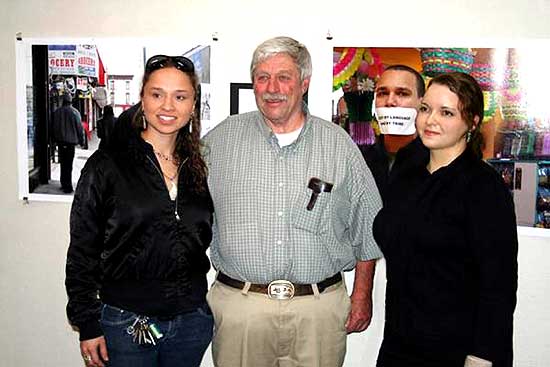
left to right: Courtney Leonard, Peter McLean, Dan Loudfoot, Nayana Glazier
Untold Stories & Native Voices
Nashawannuck Gallery
Our media, styles and works are unique and could have stood on their own, however together they made a statement about the history, present and future of native people.
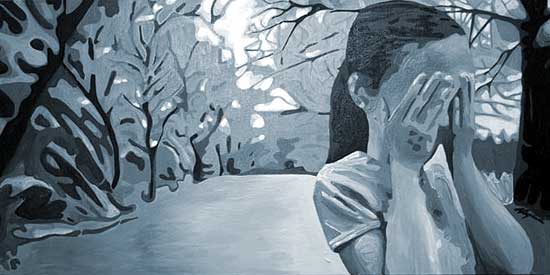
Nayana Galzier, Untitled, Acrylic, Nashawannuck Gallery, 2008

left: Douglas Miles with famed Hip-Hop photographer Ernie Paniciolli,
his film The Other SIde Of Hip-Hop was shown at REMIX Harvard
right: Douglas Miles, LOVE
Archaeology – noun 1. The scientific study of historic or prehistoric peoples and their cultures by analysis of their artifacts, inscriptions, monuments, and other such remains, esp. those that have been excavated. 2. Rare. ancient history; the study of antiquity. -www.dictionary.com
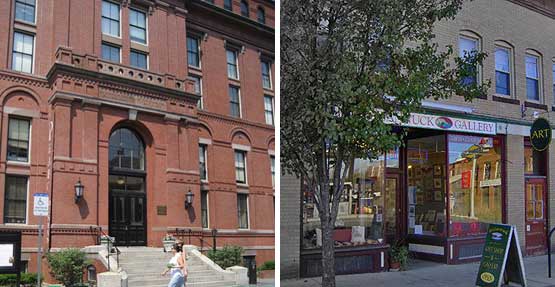
left: The Peabody Museum of Archaeology & Ethnology, Harvard University
right: Nashawannuck Gallery, Easthampton Massachusetts
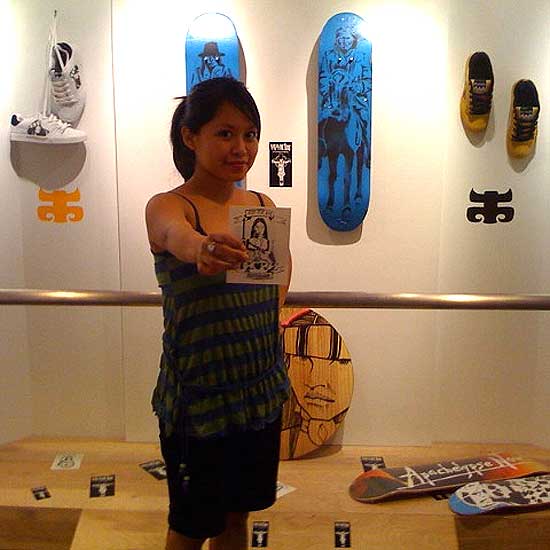
Douglas Miles, Art For The People, apacheskateboards.com, 2008
with Kelsey Long in photo
Thursday, June 05, 2008
Scenes Ouvertes à L’Insolite
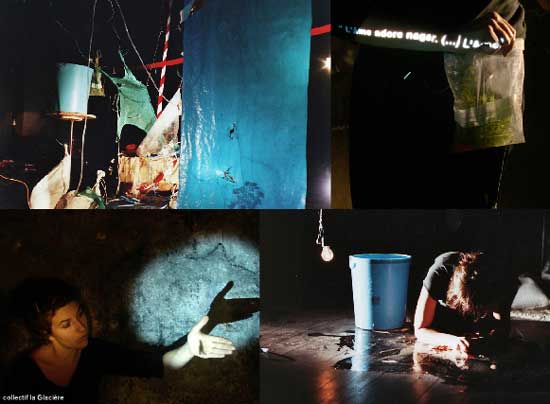
Théâtre de la Cité Internationale, Paris, France
15-25 May 2008
http://www.theatredelamarionnette.com/scenesouvertes.html
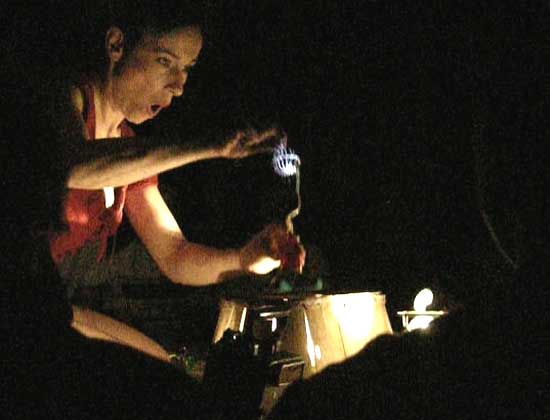
What we do realize after viewing a few performances, in my case 7 of the 14 presentations, is each collective remains faithful to the exploration of reality through the discovery of the make-believe. In other words, facing death by rebirth. As with a magic show, suspense is the key emotion to unravel the cycle of personal development. Like the art student exploring a canvas by copying the masters, the actor/manipulator reveals how the mind confronts existence. In "Desirée," we are thrown into the cellar with a suffering abused girl who survives by recreating a dialogue between self, object and an imaginary persona. In coping with fear she displaces all emotion into gestural scenarios. Here is a production that presents ‘playing dolls’’ in a most dramatic, intense one-person drama, grâce à the performance of Coco Bernardis. And an honorable mention to the improvisational musician, Antoine Arlot who truly played visual sound.
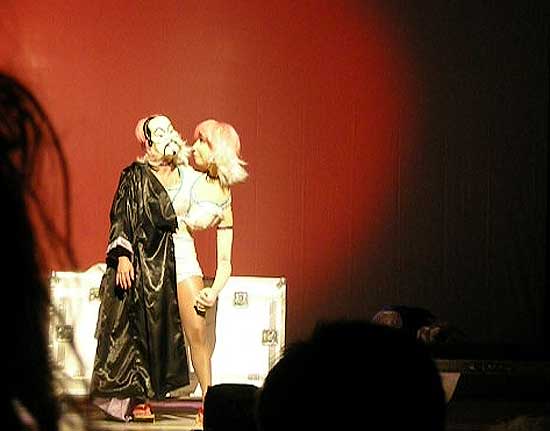
"Mr. H" (an adaptation of Dr. Jekyll and Mr. Hyde) is also a whirlwind in connecting the self with its multiple attempts and failures to illustrate life is a process. Visually dazzling as if watching a circus on acid, the three actors and one puppet move on, off, behind, sideways while playing tap dancing apes, reproducing via overhead projector "Journey to the Center of the Earth" mad scientist, syncing lights and alarms à la Richard Foreman, mocking Hollywood shadow dance and borrowing Film Noir in their mystic hysterics. Well, ‘I-can’t-remember-how-it-ended-but-I-liked-it-anyway’ was my reaction. It takes courage to cross the border.
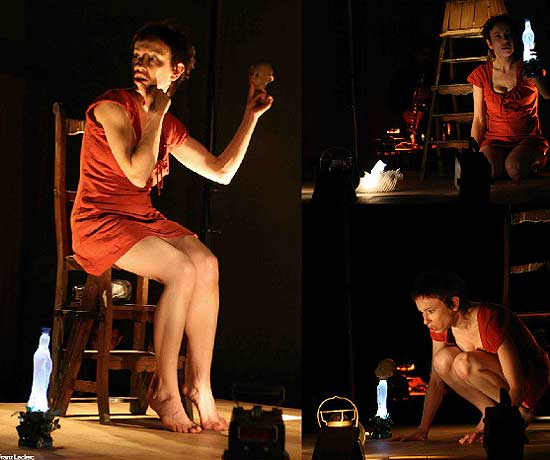
I’ve worked 15 years with experimental technology under the label of ‘New Technology’, ‘New Media’, ‘Interactive Performance’ and/or ‘Experimental Video’. 50% of the time the questions were geared toward equipment brands and software development in-progress. Questions of poetry and content were non-existent. In "Me Too: A Sideshow," the story is about a baby puppet recounting his Siamese twin mother who reminisces of a time in a caravan by way of a video clip. (Did you catch that hall of mirrors?) Here, cinema is used as a dimension that could only be expressed by a window of moving images. (And nobody would ask how many lumens was the projector nor the name of the digital effects applied on the video!) Last month on the outskirts of Paris, I found myself every Sunday at the Théâtre de la Cité relearning the lesson on how marketing can jet your audience to a glacier mountain when the meeting point was in the Sahara. Under the heading of “Marionnettes” aesthetic parallels provided the base to the limitless use of tools and definition of ‘spectacle’.
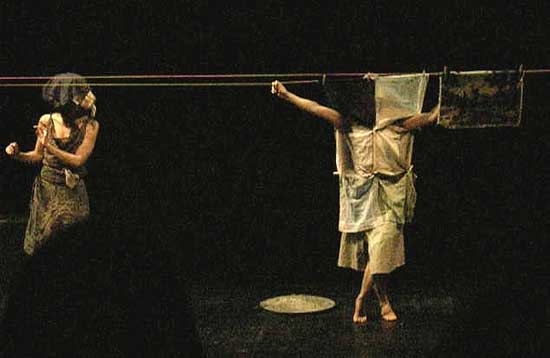
In Encore des Changements a poet crawls on the floor like a handicapped child reaching for a cord. Video projection is used to recite words projected on her arm as cinematic tree silhouettes dance inside the painter’s paint. At one point she fondles a huge mass of cotton like a Fluxus inspired media artist dancing with paper (Jessica Higgins in "North Water Song"). It’s so sensual you want this moment of simplicity that fulfills an urge to last longer. Spirituality and sensuality make a good couple. In the end as in the beginning and middle of the piece, a combination of techniques is used to examine the fragility of existence. The narrative arch seemed to be underdeveloped. Be that as it may, I still look forward to the next attempt.
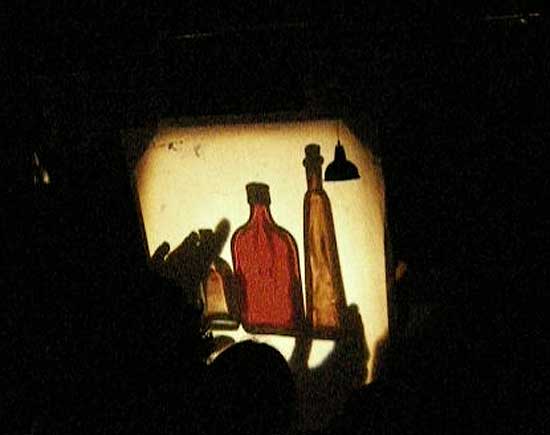
Incorporating cinema or merging forms effectively is no easy feat. However, the Festival Scènes Ouvertes à L’insolite’ gave me hope again. Breaking rules is necessary in experimentation, however there is a certain tradition that holds true- Start with a foundation and voyage to the ephemeral can bring fruitful results.
Artist Organized Art
as seen in:

help by linking us (click in box, copy code, paste code into your site or blog page)
http://artistorganizedart.org
Makes Example: http://artistorganizedart.org
XML ::.. bookmark this page: del.icio.us Furl reddit Yahoo MyWeb
Get More Involved: Donate Now | Log In | Sign Up Now | Subscribe | About Us